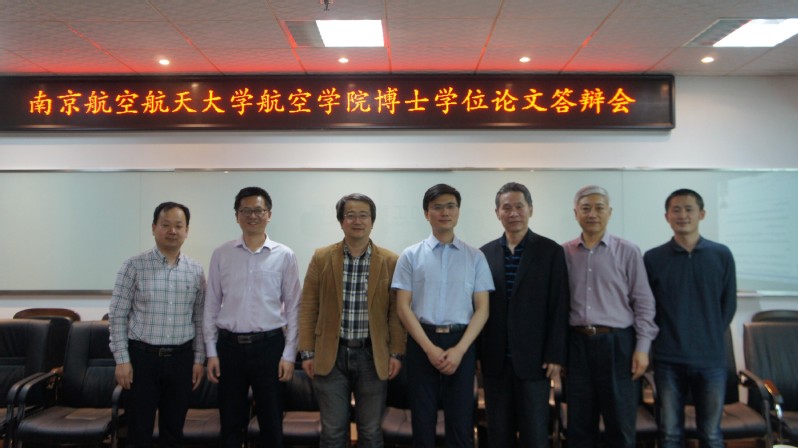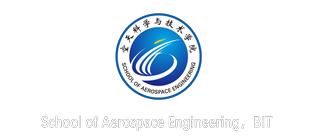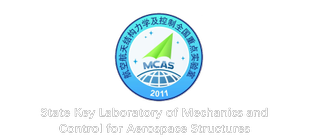2022年3月16日下午3时,团队博士研究生岳承宇在南京航空航天大学明故宫校区A18号楼705室进行学位论文答辩。答辩主席为陆军工程大学基础部王在华教授,答辩委员有河海大学力学与材料学院茅晓晨教授、南京航空航天大学航空学院韩景龙教授、陈卫东教授和黄锐教授。答辩主持人为南京航空航天大学航空学院刘豪杰副教授。
岳承宇博士师从赵永辉教授,主要研究方向为气动弹性力学与控制,博士论文题目为《飞机气动伺服弹性建模与突风载荷减缓控制方法研究》。经过两个小时的汇报和提问环节,岳承宇博士获得了答辩委员会的一致认可,期间也对多个该领域前沿问题进行了热烈的讨论。最后,经过答辩委员会投票表决,一致通过岳承宇同学的博士学位论文答辩,并建议授予工学博士学位。

论文摘要:
良好的飞机设计需要保证飞机整个生命周期内的性能和飞行品质,而气动弹性是制约飞机性能的一个重要因素。气动弹性对飞机设计的影响体现在稳定性要求和载荷设计要求两方面,其中突风扰动引起的附加载荷是结构设计的重要依据。现代飞机倾向于大量使用轻质复合材料和大展弦比机翼,造成飞机对突风扰动的敏感度增加。通过主动还是被动的方式来减缓突风的影响需要在飞机设计中仔细选择和权衡。在先进飞机设计理念的指导下,研究和发展主动控制技术成为航空界迫切关注的课题。充分利用气动弹性效应,而不是刻意回避,才能在确保飞行安全的同时设计出更轻、更灵活的飞机。考虑弹性结构-非定常气动力-控制系统相互耦合的气动伺服弹性 (ASE)既是经典研究领域,同时传统分析和设计方法在当前发展趋势下又存在不足。本文研究飞机ASE系统的突风响应分析与主动突风载荷减缓控制,主要内容和贡献如下:
(1)提出了一种改进的ASE状态空间建模方法。通常时域方法获得的突风分析结果不如频域方法准确,原因是建立ASE状态空间方程时,对频域气动力的有理函数近似 (RFA)会引入模型误差,而突风气动力的误差尤其明显。改进方法利用Loewner矩阵卓越的建模能力,首先由频域数据构造描述系统表示的高精度空气动力子系统模型,避免了传统RFA方法的人工干预和精度不足问题。随后,提出了一套新的后处理方法,可将描述系统转换为状态空间系统,并在保证系统稳定性的前提下对模型进行简化。最后,通过一个通用运输机的数值算例验证了改进方法的有效性,其中突风气动力模型和突风响应计算结果的精度得到了大幅提升。
(2)基于自适应前馈控制,开发了一个大型运输机的突风载荷减缓系统。反馈控制在过去一直是主动突风减缓的主要手段,其不足之处在于控制作用滞后于结构响应,对扰动的补偿不如前馈控制及时。本文使用如下前馈控制系统配置:机载alpha传感器用于测量突风迎角,左右翼梢处和质心处的加速度传感器用于构造误差信号,FIR滤波器提供前馈控制律,对称偏转的副翼负责减缓机翼弯曲振动。FIR滤波器的系数使用自适应算法学习获得。利用改进的循环泄漏LMS算法,保证了突风减缓系统能够在数字化运算环境中稳定运行。数值算例详细考察了离散突风、连续突风和非平稳突风下的载荷减缓效果,以及传感器测量误差的影响。
(3)基于当地建模技术提出了一种建立折叠翼线性参数变化 (LPV)模型的实用方法。LPV模型由多个固定参数下生成的当地线性时不变 (LTI)模型描述,通过插值可实现高效的参数化系统分析和慢参变响应计算。不同参数下ASE系统的当地状态空间模型存在不一致问题,现有一致性处理方法均针对状态空间矩阵进行,缺少对ASE系统构造的特殊性的考虑。本文方法从更底层的结构模型和气动模型着手处理,通过结构模态匹配和RFA表达式的缩放成功解决了一致性问题。数值算例验证了一致性处理的必要性,以及基于插值的建模方法的有效性。
(4)将基于导纳的部分极点配置方法应用于参变气动弹性系统,实现了折叠翼参变系统的突风载荷减缓控制。首先将振动主动控制领域中的导纳方法推广到气动弹性系统,给出了多输入多输出控制增益的求解公式;随后针对控制增益求解方程中的传感器布局问题,提出了可变结构下计算最优传感器布局的方法。变参数下的控制实施方案与当地建模技术类似:由统一的极点配置求出一致的当地控制器,再使用插值方法构造出参数化控制器。数值算例验证了控制器在折叠角的变化范围内对突风引起的结构振动和附加载荷均有良好的减缓效果。
(5)将基于等效输入扰动 (EID)的抗扰动控制方法引入ASE系统的突风载荷减缓,并提出了一种新的控制器参数化设计算法。突风扰动的影响通过EID估计器观测,并在控制输入通道主动补偿,能够极大提高控制系统的抗扰动性能。EID方法应用于ASE系统时,加速度测量会使导致扰动估计带宽受限,进而使控制器的低频抗扰动性能下降。为此提出了一种新的EID控制系统设计方法,并结合观测器增益给出了参数的整定算法。通过指定带宽参数,EID方法很容易推广为可变体折叠翼的参数化控制器。数值仿真首先详细展示了控制系统的设计流程,并与常规设计方法比较,随后验证了EID方法对参变ASE系统突风减缓的有效性。
Abstract:
Basic aircraft design requires guaranteed performance and flight quality of the aircraft throughout its life cycle. Aeroelasticity is a significant factor that affects the aircraft performance. The influence of aeroelasticity on aircraft design is reflected in the stability requirements and load design requirements, and the additional loads caused by gust disturbances are crucial for structural strength design. Modern aircraft tends to use lightweight composite materials and large aspect ratio wings, resulting in increased sensitivity to gusts. The designer requires a choice whether to use active or passive methods to reduce the impact of gusts. Under the guidance of advanced aircraft design, the development of active control technology has become an urgent issue in the aviation industry. Making full use of the aeroelastic effects, rather than avoiding it, can design a lighter and more flexible aircraft while maintaining the flight safety. Aeroservoelasticity (ASE), which involves the coupling of elastic structure, unsteady aerodynamics, and control system, is a classical research field. However, under the current development trends, traditional analysis and design methods have shown deficiencies. This dissertation is devoted to the gust response analysis and active gust load alleviation on the aircraft ASE system. The main contents and contributions are summarized as follows:
(1) An improved ASE modeling approach is developed. Generally, the gust analysis results obtained by the time-domain methods are not as accurate as the frequency-domain method. The reason is that the rational function approximation (RFA) of the frequency-domain aerodynamics will introduce model errors when establishing the ASE state-space model. The improved method uses the excellent modeling tool of the Loewner matrix to construct a high-precision aerodynamic subsystem, which avoids the insufficient precision and manual intervention of the traditional RFA method. Then, a new post-processing method is proposed to simplify the model and enforce stability. Finally, numerical example is performed on a generic transport aircraft to verify the effectiveness of the improved method, in which the accuracy of the gust related aerodynamics and the gust analysis results are greatly improved.
(2) A gust load alleviation system for a four-engine large transport aircraft is developed based on the adaptive feedforward control. The feedforward control system consists of the following parts: an airborne alpha sensor is used to measure the gust angle, the acceleration sensors at left and right wing tips and the center of mass are used to generate the error signal, the FIR filter provides the control law, and the symmetrically deflected ailerons are aimed to alleviate the bending vibrations of the wing. The coefficients of the FIR filter can be adaptively updated. The circular leaky LMS algorithm ensures that the gust alleviation system can operate in a long-term stable environment. Numerical examples make detailed investigations on the load alleviation effects under discrete gusts, continuous gusts and non-stationary gusts, as well as the influence of sensor measurement errors.
(3) A practical method for establishing a linear parameter-varying (LPV) model for a folding wing is proposed. Based on the local modeling technique, the LPV model is represented by a set of local linear time invariant (LTI) models that are generated under fixed parameters. Parameterized system analysis can thus be efficiently implemented through matrix interpolation technique. There may be inconsistencies between the local state-space ASE models, and the existing consistency processing methods are all based on the state-space matrices. The proposed method turns to process the structural and aerodynamic models separately, and solves the consistency problem through structure modal matching and scaling of RFA coefficients. Numerical examples demonstrate the importance of consistency processing, and verify the effectiveness of the proposed interpolation-based modeling methodology.
(4) A receptance-based partial pole placement method is applied and extended to the parameterized aeroelastic system for gust load alleviation of the folding wing ASE system. First, the receptance method in the field of active vibration control is extended to the aeroelastic system, and the equations for solving multiple-input-multiple-output control gains are derived. Then, to obtain well-conditioned solutions for the control gains, an optimal sensor placement method for variable structure configuration is proposed. The parameterized controller is finally constructed in a similar way to the local modeling technique. Numerical examples verify that the interpolation-based parameterized controller achieves satisfactory gust alleviation performance within the range of the folding angle.
(5) An equivalent input disturbance (EID)-based disturbance rejection control strategy is presented to alleviate the influence of gust disturbance on the ASE system. The influence of gust disturbance is actively evaluated by the EID estimator and compensated in the control input channel, giving a high disturbance rejection performance of the ASE system. It is found that the acceleration measurement will limit the disturbance estimation bandwidth. In view of this, a new design method is proposed, and the parameter tuning algorithm is given in combination with the design of the observer gain. By specifying bandwidth parameters, the EID method can easily be extended to the parameterized ASE system of the folding wing. Numerical simulation first shows the detailed design procedure of the control system, and then verifies the effectiveness of the EID method in gust alleviation of the folding wing.
博士期间发表论文:
Chengyu Yue, Yonghui Zhao. An improved aeroservoelastic modeling approach for state-space gust analysis. Journal of Fluids and Structures, 2020, 99: 103148.
Chengyu Yue, Yonghui Zhao. Interpolation-based modeling methodology for efficient aeroelastic control of a folding wing. International Journal of Aerospace Engineering, 2021: 8609211.
Yonghui Zhao, Chengyu Yue, Haiyan Hu. Gust load alleviation on a large transport airplane. Journal of Aircraft, 2016, 53(6): 1932‒1946.
张立启,岳承宇,赵永辉.变后掠翼的参变气动弹性建模与分析.力学学报, 2021, 53(11): 3134‒3146.
毕业博士简介:
岳承宇,男,1989年11月生于湖北省襄阳市。2007年9月考入青岛理工大学工程管理专业,2011年6月毕业并获得学士学位。2011年9月考入南京航空航天大学工程力学专业攻读硕士学位,从事气动弹性力学与控制研究,导师王立峰教授。2014年4月毕业并获得硕士学位,同时开始攻读博士学位,导师赵永辉教授。





